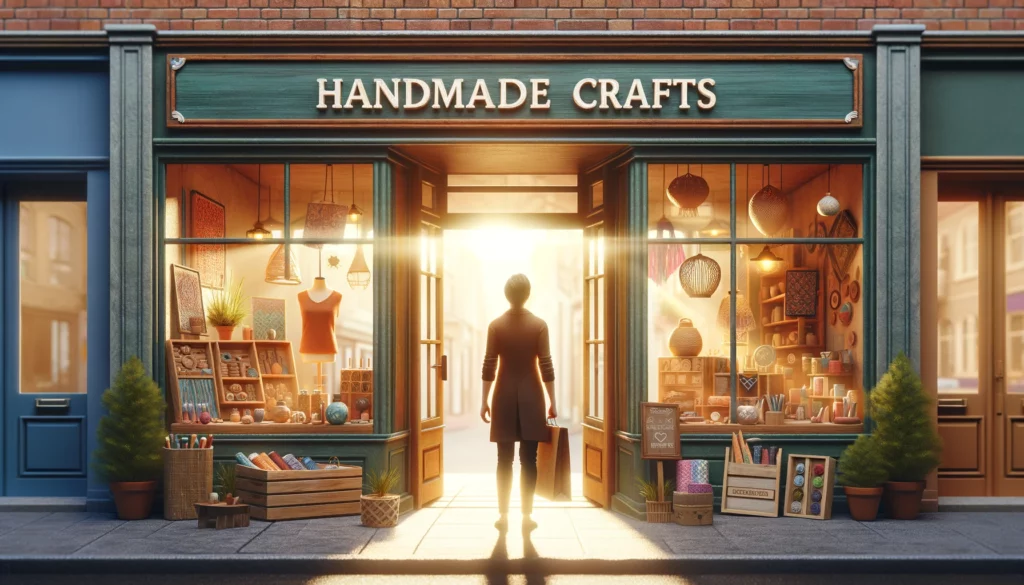Quick Overview of Starting a Handmade Craft Business:
1. Have a startup checklist
2. Have a craft business plan template
3. Learn the basics of business registration
4. You will need a permit, depending on what you make
5. You need your brand identity
6. You also need to have insurance
I know that starting a business is a bit hard, specially when you’re kinda new to this. So I want to help you out, I will start with laying out a clear, actionable guide on how to start a handmade craft business from the comforts of your home. This isn’t just about following your passion; it’s also about laying a solid foundation for your business to thrive. Let’s get into the heart of it.
Article Overview

First up, you can’t overlook the importance of a startup checklist. Before you even think of selling, you’ll need to define the scope of your business.
Choose something that resonates with you, whether that’s bespoke jewelry, hand-painted ceramics, or upcycled furniture.
From there, it’s about understanding your target market — and if you’re still exploring other creative paths, here are some of the most popular ways to make money from home that might inspire your next move.
Starting a craft business with no money might sound daunting, but it’s entirely possible. Focus first on the resources and skills you already have. Can you repurpose materials? Will your friends and family contribute to word-of-mouth marketing? Sure, funding can facilitate growth, but creativity is your real capital here.
Of course, you’ll need a craft business plan template that helps project your goals and the strategies to achieve them. A simple roadmap can help you foresee challenges and figure out how to navigate them. This should include your product description, market analysis, sales strategies, and financial projections.
And don’t worry too much about it being perfect from the get-go—you can always adjust your approach down the road. Start with the tips I have shared with you above, and you can change it over time. Sounds good right?
Now, what type of business is a craft business? Generally, it falls under the umbrella of sole proprietorships or LLCs (Limited Liability Companies), depending on how you structure it. This leads us directly into the nitty-gritty of legal considerations, ensuring your business is not just creative but also compliant.
Navigating the Legalities: Starting a Craft Business the Right Way
We have now already gone through some basics here. Now I want to talk about the legal aspect of kicking off your craft business. It might sound scary, but it’s crucial for protecting your work and setting the foundation for a trustworthy brand. Here’s a breakdown of the key legal steps to consider.

First up, you’re going to find out about the basics of business registration. Depending on where you live, this might include obtaining a business license, registering a ‘doing business as’ (DBA) name, or incorporating your business. I’ll walk you through how to check so that your business is legal.
Next, let’s talk about permits. Depending on the crafts you’re making, you might need special permits, especially if your craft involves food items, cosmetics, or children’s toys. It’s not just about creating beautiful art; it’s also about ensuring that your products meet safety standards.
Your brand’s identity isn’t just important for marketing; it’s a legal matter too. I’m going to cover why trademarking your brand name and logo can be a strategic move to avoid future headaches. And it’s not as complicated as it might sound; there are plenty of resources to guide you through the process.
Lastly, let’s discuss insurance. It’s not the most exciting topic, but it’s one of those safety nets that can save you a lot of trouble. There are a few types of insurance that might be relevant to your craft business, like product liability or home business insurance, and why it is a smart part of your business strategy.
In my opinion, weaving through the legalities early on is like doing detailed prep work before crafting. It ensures the rest of your business operations can run smoothly without any legal snags down the line.
Crafting Your Path to Success: Plans, Ideas, and Resources
You’re now ready to turn your passion into a profit, and I’m here to help you with that last push across the finish line. By now, you’ve got a grasp on the essentials, and you’ve navigated through the legal maze. So, it’s time to focus on the exciting part: bringing your craft business vision to life.
Draw up a detailed craft business plan. Your template should address key elements such as market analysis, product lineup, marketing strategy, financial planning, and growth projections. If you’re looking to expand beyond handmade items, you might even explore something like how to start a full eCommerce business from home to reach a wider audience.
Choose a business structure that resonates with you and the goals you have set for your craft business. The common types for small businesses include sole proprietorships, partnerships, and limited liability companies (LLCs). Research and evaluate which one aligns best with your venture’s size and scope.
If you’re short on ideas or seeking inspiration, look no further. Handmade craft business ideas abound if you let your creativity flow. Think personalized gifts, eco-friendly toys, home dcor, artisan jewelry, or whatever niche excites you. Remember, uniqueness and authenticity can set your offerings apart. If that wasn’t enough, here is a quick video with a few ideas for you!
Let’s move forward here. In my opinion, a successful craft business is built on more than just a product; it’s built on a dream. So dream big, plan meticulously, and don’t shy away from starting small. Your first attempt doesn’t need to be your last, so you can always refine and grow your business in time.
Now You Know How To Start A Handmade Craft Business!
I really hope that you tap into the rich vein of opportunity that the craft business world offers. Keep honing your skills, listen to your customers, and never stop learning. Thank you for allowing me to guide you through this journey. I’d love to hear your feedback, so share your stories and questions below, and let’s keep the conversation going!







